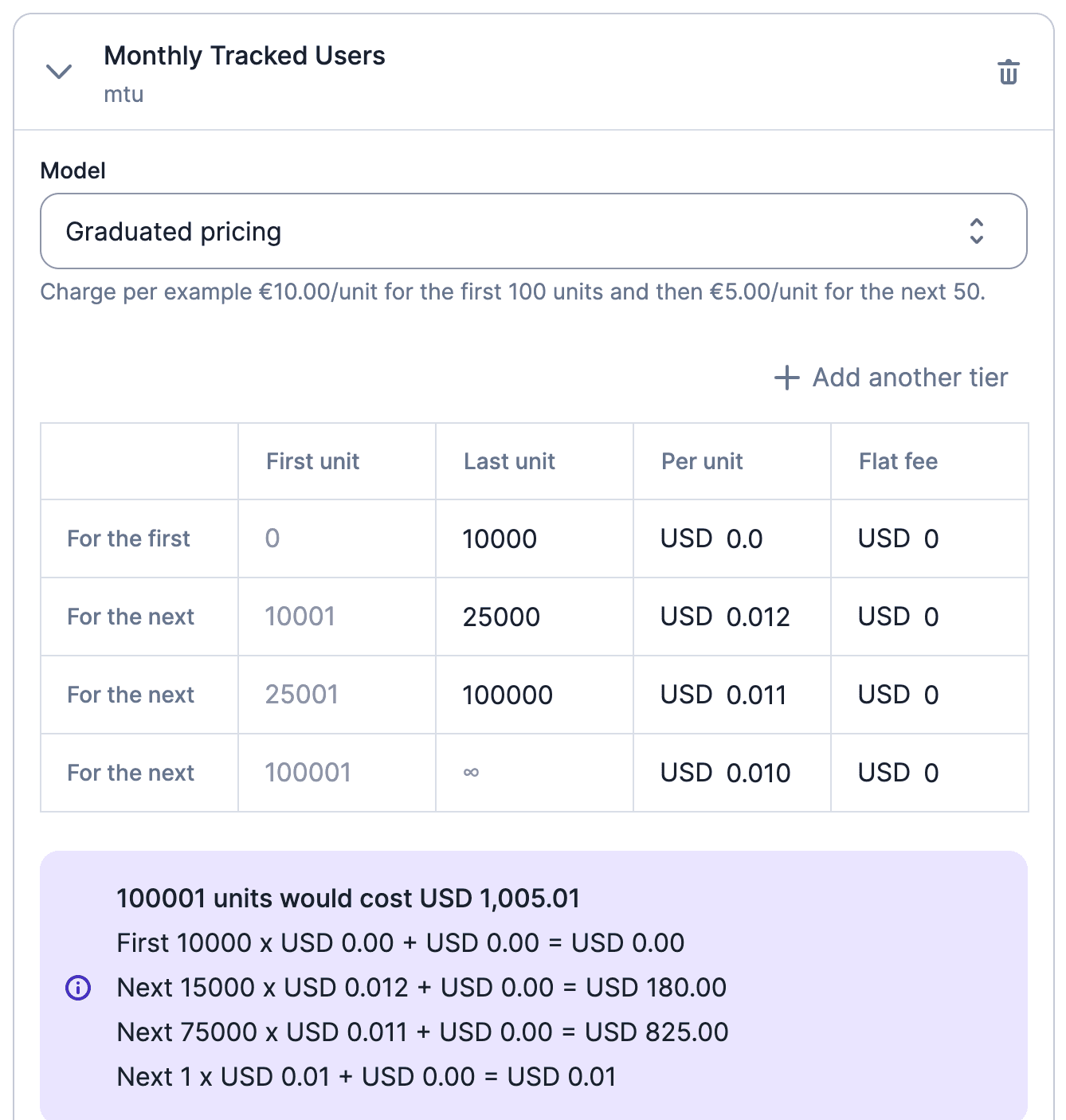
Engineering
Why we still build with Ruby in 2025
Finn Lobsien • 3 min read
Sep 8, 2022
/5 min read

Lago is an open-source billing API that helps engineers implement their billing systems faster. We do think the future of pricing is hybrid, which includes subscription fees and usage-based charges. Over the past few years, engineers have struggled to implement exotic billing systems but this is over!
Lago also provides a cloud-hosted application for those who don’t want to run it on their own environment.
We are going to build an entire hybrid billing system, including plans and usage-based features. Let’s try to replicate Segment’s pricing for instance!
You can find the main Lago repository on GitHub.
Before we get started, you need to:
This demo is made through basic CURL API calls, but Lago also provides API clients in order to make the implementation process easier.
Start running Lago on your own environment. You will have access to Lago API and Lago UI (frontend admin panel to perform no-code tasks).

You can now open your browser and go to http://localhost to connect to the application. Lago's API is exposed at http://localhost:3000.
If needed, you can override your environment variables (learn more).
The usage-based feature billed by Segment is the number of monthly tracked users (MTUs), which is related to the total number of unique users tracked monthly.
Lago’s billable metrics allow you to track and automatically aggregate usage to determine the number of units to be charged at the end of a billing period.
Here we’re going to define MTUs as a billable metric:

For this billable metric, the aggregation type is unique_count_agg, which is used to count the number of unique user_id values recorded during the billing period.
Now that we have our billable metric, we can create our first plan. The plan defines the billing period and all fees (i.e. subscription and usage-based charges).
Let’s take the example of Segment’s Team plan. The base subscription costs $120 per month month, including 10,000 free MTUs. If you track more users, you will be charged for the overage, according to Segment’s graduated pricing model.

Let’s take a closer look at the request above.
The request creates a basic plan at $120/month that is paid in advance (beginning of period), with no free trial. If can customise it using the following fields:
• interval: can also be set to yearly or weekly;
• amount_currency: all currencies are available;
• trial_period: set a number of trial days; and
• pay_in_advance: if set to false, the subscription fee will be paid in arrears (end of period).
In this example, we selected a graduated charge model for our usage-based feature (i.e. MTUs). Here’s what we can see in the user interface.

You can create as many charges as you want and there are many charge models available (e.g. volume pricing, standard pricing, percentage pricing, package pricing).
Congratulations, your pricing is ready! You can now create a customer, assign them a plan and start monitoring usage.

This request allows you to create a customer and also to define the default payment provider (i.e. the payment service provider that will be used to collect payments for this customer). We also set a tax rate of 12.5% for this customer.

To start billing a customer, you need to assign them a plan. This action will create a subscription.


When assigning a subscription, you can:
• Define your own external_id;
• Choose between anniversary or calendar for the billing time - a subscription based on calendar dates is billed on the first day of each week/month/year, while a subscription based on the anniversary date is billed on the day it was created (e.g. every 4 of the month); and
• Enter a subscription name that will be displayed on the invoice and will allow you to differentiate subscriptions that share the same plan (e.g. Project 1 on the Free plan and Project 2 also on the Free plan).
As the base amount of the Team plan has to be paid in advance, Lago automatically generates a first invoice. The usage-based charge related to MTUs will be billed at the end of the period.

This invoice can be customized with information about your organization, your logo and a custom footer. For compliance purposes, invoices have an incremental sequential_id and incremental invoice_number as well.
Lago has an event-based architecture. When a subscription is associated with a customer, you can start pushing events related to your billable metrics. By using a unique transaction_id, we make sure that an event is not ingested twice. It’s what we call an idempotency key.
Below are three events ingested by Lago:




We have three different events, however, two of them are sending the same user_id. As we use a unique count aggregation type for the billable metric MTUs, the number of units to be charged is 2.
Lago then automatically calculates the fees depending on the charge model of the plan. With Segment’s pricing, the first 10,000 MTUs are free of charge. Therefore, these two units cost $0.

This is how Lago can help you implement a usage-based billing system in just a few hours (not months). It’s easy to build but also easy to maintain.
In addition to this, Lago manages upgrades/downgrades, taxes, discounts, prepaid credits and prorated fees. Ready to give it a try?